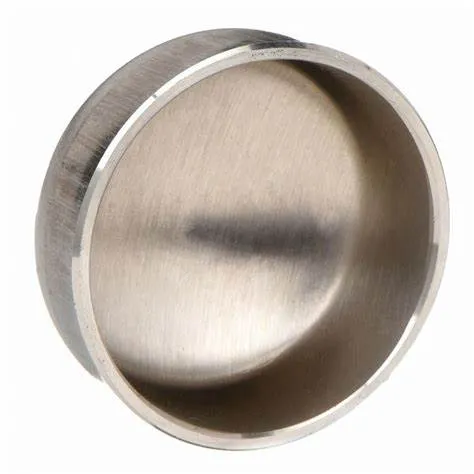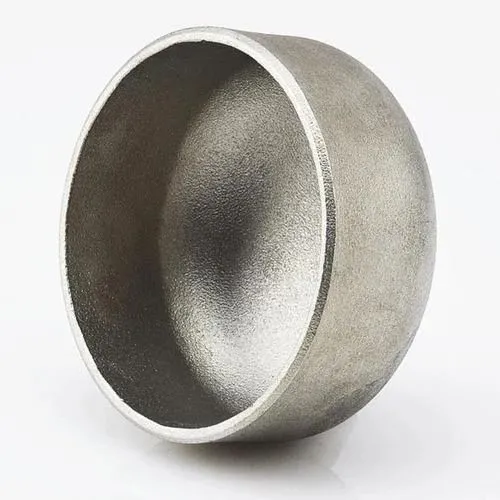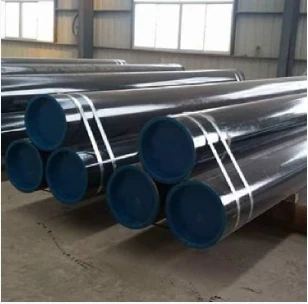JIS B2311, boru sistemlərində istifadə olunan qapaqlar da daxil olmaqla, qaynaqlı boru fitinqlərini əhatə edən Yapon Sənaye Standartıdır. Butt-qaynaq qapaqları, sızma və ya çirklənmənin qarşısını almaq üçün bir möhür təmin edərək, borunun ucunu bağlamaq məqsədinə xidmət edir. Budur, JIS B2311 qaynaq qapaqlarına giriş:
- 1. JIS B2311 Standard:
- - JIS B2311 standartı boru sistemlərində qapaqlar daxil olmaqla, qaynaq armaturlarının dizaynı, ölçüləri, materialları, istehsalı və sınaqdan keçirilməsi üçün tələbləri müəyyən edir.
- - Standart JIS standartlarına uyğun istehsal olunan qapaqların keyfiyyət standartlarına cavab verməsini və digər boru kəmərləri komponentləri ilə uyğun olmasını təmin edir.
- 2. Qaynaq qapağı:
- - Qaynaq qapağı, JIS B2311-ə uyğun olaraq, borunun ucunu etibarlı şəkildə örtmək və möhürləmək üçün nəzərdə tutulmuş, boru sisteminin qorunmasını və bütövlüyünü təmin edən fitinqdir.
- - Qapaqlar boru ucunun daimi və ya müvəqqəti olaraq bağlanmasını tələb etdiyi hallarda, sızmanın, çirklənmənin qarşısını almaq və ya sistemin işini bitirmək üçün istifadə olunur.
- 3. Material və tikinti:
- - JIS B2311 spesifikasiyasına uyğun qaynaq qapaqları müxtəlif tətbiq tələblərinə cavab vermək üçün karbon polad, paslanmayan polad və lehimli polad kimi müxtəlif materiallarda mövcuddur.
- - Bu qapaqlar borunun ucuna qaynaq edildikdə möhkəm və sızdırmaz əlaqəni təmin etmək üçün standart tikinti üsulları ilə istehsal olunur.
- 4. Tətbiq və üstünlüklər:
- - Qaynaq qapaqları müxtəlif sənaye sahələrində, o cümlədən neft və qaz, kimyəvi proseslər, su təmizləyici qurğular və boru uclarının etibarlı şəkildə bağlanması lazım olan digər sahələrdə tətbiq tapır.
- - Qapaqlar boruların uclarını ətraf mühit elementlərindən qoruyur, çirklənmənin qarşısını alır və boru sisteminin təmizliyini və bütövlüyünü qorumağa kömək edir.
- 5. Quraşdırma və Qaynaq:
- - Sıx və sızdırmaz sızdırmazlığı təmin etmək üçün qaynaq qapaqlarını quraşdırarkən düzgün quraşdırma, boru ucunun hazırlanması və qaynaq texnikası daxil olmaqla, düzgün quraşdırma təcrübələri vacibdir.
- - Qaynaq borulara qapaqların bağlanması üçün ümumi üsuldur, təzyiqə, temperatur dəyişikliyinə və sistem daxilində maye axınına tab gətirə bilən etibarlı və daimi bağlanma təmin edir.
- Xülasə, JIS B2311 qaynaq qapaqları boru sistemlərində boruların ucunu etibarlı şəkildə bağlamaq və qorumaq üçün istifadə olunan mühüm komponentlərdir. Bu qapaqlar, boruların bağlanması və mühafizəsinin zəruri olduğu sənaye proqramlarında keyfiyyət, etibarlılıq və uyğunluğu təmin etmək üçün standart tələblərə uyğundur.
What Is a Butt Welding Cap and How Is It Used in Industrial Piping?
In industrial piping systems, end-of-line sealing and branch closures require robust solutions. A butt welding cap serves as a critical component for terminating pipes securely. By providing a seamless, welded closure, this fitting maintains system integrity, prevents leaks, and supports compliance with industry standards.
What Is a Butt Welding Cap?
A butt welding cap—also called a pipe end cap or buttweld end cap—is a round fitting designed to close off the end of a pipe. It’s manufactured to match the pipe’s outer diameter and schedule, with either a hemispherical or flat face. To install, both the pipe end and cap are beveled to form a V‑groove, enabling full‑penetration, fusion welds. Common materials include carbon steel, stainless steel, nickel alloys, and other engineered grades, chosen to satisfy pressure, temperature, and corrosion‑resistance requirements.
How Is Butt Welding Cap Used in Industrial Piping?
Butt welding caps find application across oil & gas, petrochemical, power generation, water treatment, and general process industries for both permanent and temporary closures. During hydrostatic testing, technicians install caps to seal off sections of piping while monitoring for leaks. In new construction or retrofit projects, caps terminate branch lines, future tie‑in spools, or dead‑end mains until system expansion. Welders prepare each joint by cleaning and beveling surfaces, aligning the cap precisely, and executing a root pass followed by filler passes per the qualified Welding Procedure Specification (WPS). Post‑weld heat treatment and non‑destructive examination (NDE)—such as radiography or ultrasonic testing—verify weld integrity and compliance with ASME B16.9 and related standards. Additionally, temporary caps enable safe isolation during maintenance, allowing for segment testing and dewatering under regulatory protocols.
Benefits and Best Practices
Butt welding caps offer a smooth‑bore transition that minimizes flow disruption and stress concentration. Their full‑penetration welds deliver exceptional structural strength and leak resistance. To optimize performance, engineers should:
Select caps with matching material grades and wall thicknesses
Adhere to proper bevel angles and joint fit‑up tolerances
Follow qualified WPS protocols rigorously
Consider cladding or protective coatings in corrosive environments to extend service life
Regular inspection and thorough documentation ensure long‑term reliability and safe operation under demanding conditions.
Butt welding caps are indispensable components for achieving durable, leak‑proof pipe terminations in a wide range of industrial applications.
Butt Welding Cap FAQs
What is a butt welding cap?
|
What materials are commonly used?
|
What standards govern butt welding caps?
|
How are butt welding caps installed?
|
Where are butt welding caps typically used?
|
What are the advantages of threaded caps?
|
















